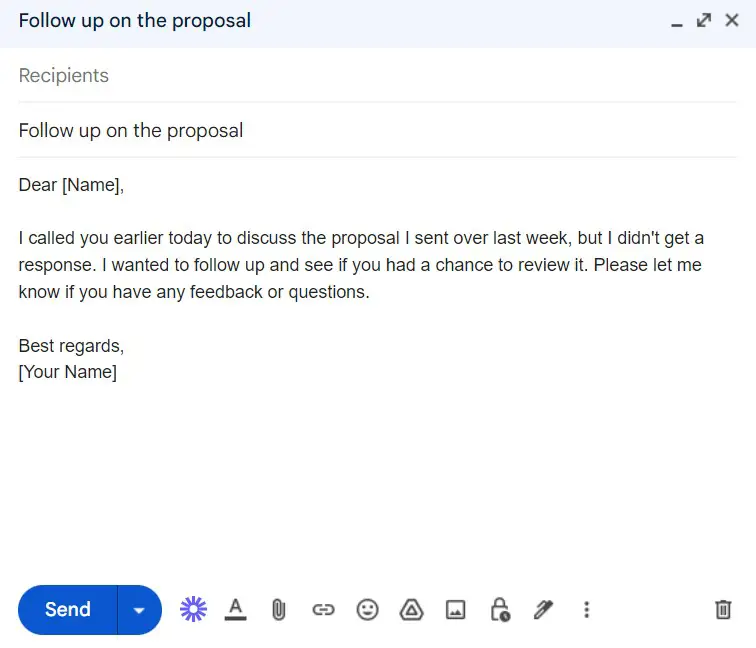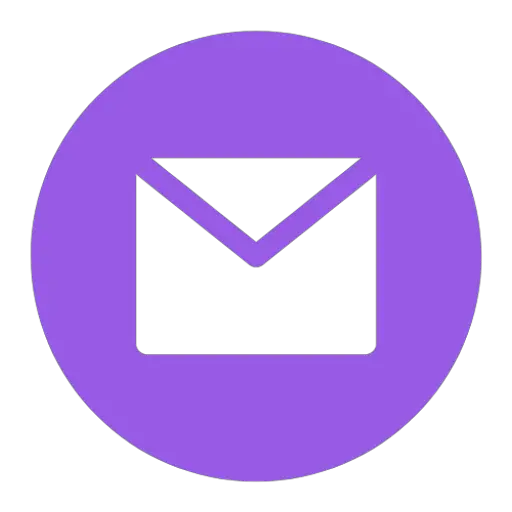In today’s world, communication is the key to success. Whether it’s a phone call, an email, or a text message, staying in touch with your colleagues, clients, and partners is essential for building strong relationships.
However, we all know that sometimes people can’t answer our calls, and that can be frustrating. It’s important to handle this situation professionally and effectively, and that’s where “I called you but you didn’t answer” comes into play.
In this article, we’ll discuss how to use this phrase in an email, when to use it, and provide you with some email examples to help you communicate effectively.
Contents
- How to Use “I Called You but You Didn’t Answer” in an Email
- “I Called You but You Didn’t Answer” Email Examples
- Example 1 – Subject: Follow up on the proposal
- Example 2 – Subject: Request for a meeting
- Example 3 – Subject: Request for information
- Example 4 – Subject: Checking in on the shipment
- Example 5 – Subject: Invitation to the conference
- Example 6 – Subject: Request for a recommendation
- Example 7 – Subject: Urgent matter
- Example 8 – Subject: Request for feedback
- Example 9 – Subject: Reminder about the meeting
- Example 10 – Subject: Request for a call
- Alternative Ways to Say “I Called You but You Didn’t Answer” in an Email
How to Use “I Called You but You Didn’t Answer” in an Email
When someone doesn’t answer your call, it’s important to follow up with an email to ensure that your message is received. “I called you but you didn’t answer” is a simple and effective way to start the email and get your point across.
You can use this phrase when you need to get in touch with someone urgently, or when you need to remind them about something important. It’s also a great way to show that you’ve made an effort to contact them and that you’re not just sending an email as a last resort.
Now, let’s move on to the next section and look at some email examples that use this phrase.
“I Called You but You Didn’t Answer” Email Examples
Example 1 – Subject: Follow up on the proposal
Dear [Name],
I called you earlier today to discuss the proposal I sent over last week, but I didn’t get a response. I wanted to follow up and see if you had a chance to review it. Please let me know if you have any feedback or questions.
Best regards,
[Your Name]
Example 2 – Subject: Request for a meeting
Dear [Name],
I called you yesterday to schedule a meeting, but I didn’t get a response. I wanted to follow up and see if there’s a time that works for you this week. I have some new ideas to share, and I believe it would be beneficial for us to discuss them in person.
Best regards,
[Your Name]
Example 3 – Subject: Request for information
Dear [Name],
I called you this morning to ask about the status of the project, but I didn’t get a response. I wanted to follow up and see if you could provide me with the information I need. Please let me know if you need any further details or if there’s anything I can do to assist you.
Best regards,
[Your Name]
Example 4 – Subject: Checking in on the shipment
Dear [Name],
I called you yesterday to check on the status of the shipment, but I didn’t get a response. I wanted to follow up and see if everything is on track. Please let me know if there are any delays or issues that I should be aware of.
Best regards,
[Your Name]
Example 5 – Subject: Invitation to the conference
Dear [Name],
I called you last week to invite you to the upcoming conference, but I didn’t get a response. I wanted to follow up and see if you’re interested in attending. It’s an excellent opportunity to network with other professionals in our industry, and I believe you would benefit from it.
Best regards,
[Your Name]
Example 6 – Subject: Request for a recommendation
Dear [Name],
I called you last week to ask if you would be willing to provide me with a recommendation, but I didn’t get a response. I wanted to follow up and see if you had a chance to consider my request. Your endorsement would greatly enhance my chances of being selected for the position.
Best regards,
[Your Name]
Example 7 – Subject: Urgent matter
Dear [Name],
I called you this morning to discuss an urgent matter, but I didn’t get a response. I wanted to follow up and see if you’re available to speak today. It’s important that we address this issue as soon as possible, and I would appreciate your prompt response.
Best regards,
[Your Name]
Example 8 – Subject: Request for feedback
Dear [Name],
I called you last week to ask for your feedback on the new marketing campaign, but I didn’t get a response. I wanted to follow up and see if you had a chance to review it. Your input is valuable to me, and I would appreciate any insights you have to offer.
Best regards,
[Your Name]
Example 9 – Subject: Reminder about the meeting
Dear [Name],
I called you yesterday to remind you about the meeting this afternoon, but I didn’t get a response. I wanted to follow up and make sure you received the message. Please let me know if you’re still planning to attend, or if there’s a conflict with your schedule.
Best regards,
[Your Name]
Example 10 – Subject: Request for a call
Dear [Name],
I called you last week to discuss the new project, but I didn’t get a response. I wanted to follow up and see if we could schedule a call to go over the details. I believe that your input would be valuable, and I’m looking forward to hearing your thoughts.
Best regards,
[Your Name]
Alternative Ways to Say “I Called You but You Didn’t Answer” in an Email
While “I called you but you didn’t answer” is a straightforward way to start an email, there are other phrases you can use to convey a similar sentiment.
Here are a few examples:
- I tried to reach you earlier, but I didn’t get a response.
- I attempted to call you, but I was unable to get through.
- I left you a message, but I haven’t heard back from you yet.
- I’m following up on our missed call.
- I’m circling back on our previous attempt to connect.
In conclusion, using “I called you but you didn’t answer” is an effective way to follow up with someone after a missed call.
By using the email examples provided in this article, you can learn how to incorporate this phrase effectively into your emails.
Additionally, by using alternative phrases, you can add some variety to your email communication.
Remember, clear and professional communication is the key to building strong relationships in the workplace.


